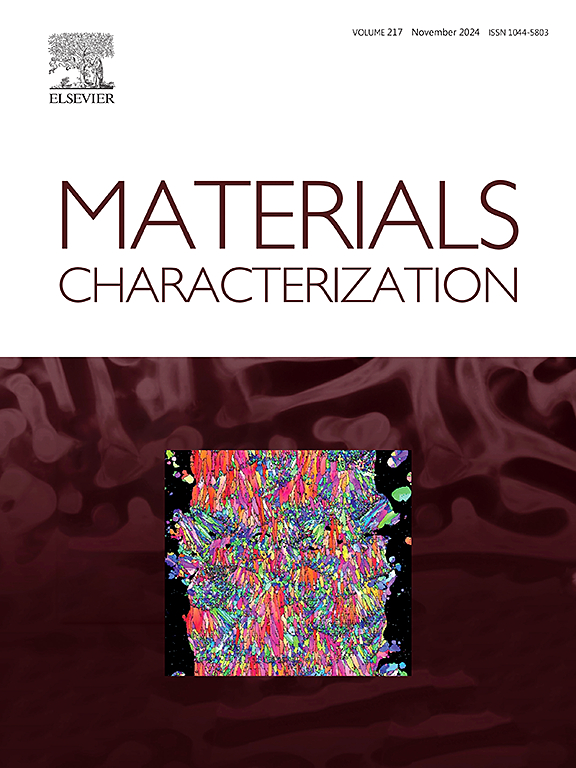An analysis of Cu-content-driven quench sensitivity in aviation Al-Cu-Li alloys
IF 5.5
2区 材料科学
Q1 MATERIALS SCIENCE, CHARACTERIZATION & TESTING
引用次数: 0
Abstract
Quenching is a critical heat treatment for aging-hardenable Al-Cu-Li alloys. However, current research on the Cu-content-driven quenching precipitation behaviors remains limited. In this paper, the quench sensitivity of Al-Cu-Li alloys with a broad range of Cu contents (3.0 wt% ∼ 4.0 wt%) was detailed investigated through a serial of interrupted quenching treatments. Furthermore, the interaction between Cu atoms and vacancy was deeply analyzed based on the first principles calculation. Analysis of the constructed Time-Temperature-Transformation (TTT) and Time-Temperature-Property (TTP) curves reveals a decreased “nose tip” temperature and a shorter incubation period with the increase in Cu content. The increased Cu content accelerates the decomposition of supersaturated solid solution (SSSS), facilitating coarse Cu-rich particles precipitation during quenching process. This enhanced quenching precipitation is primarily attributed to the decreased formation energy and stronger binding energy of the Cu-Vacancy pairs for the sample with higher Cu content, which thereby lowers the nucleation and diffusion activation energy for quenching precipitates. Furthermore, the precipitation of Cu-rich particles leads to a reduction of the aging precipitates during the subsequent aging process, especially for θ’ phase. The quenching precipitation behavior also changes the subsequent aging precipitation sequence and promotes the formation of δ’ phase. This work aims to provide experimental and theoretical basis for the fabrication process and composition design of aviation Al-Cu-Li alloys with large scale thickness.
航空Al-Cu-Li合金cu含量驱动的淬火灵敏度分析
淬火是时效硬化Al-Cu-Li合金的关键热处理工艺。然而,目前对cu驱动淬火析出行为的研究仍然有限。本文通过一系列的中断淬火处理,详细研究了宽范围Cu含量(3.0 wt% ~ 4.0 wt%)的Al-Cu-Li合金的淬火敏感性。在第一性原理计算的基础上,深入分析了Cu原子与空位的相互作用。对构建的时间-温度-转变(TTT)和时间-温度-性质(TTP)曲线的分析表明,随着Cu含量的增加,“鼻尖”温度降低,孵育期缩短。Cu含量的增加加速了过饱和固溶体(SSSS)的分解,促进了淬火过程中富Cu粗颗粒的析出。这种淬火析出的增强主要是由于Cu含量高的样品Cu-空位对的形成能降低,结合能增强,从而降低了淬火析出的成核和扩散活化能。此外,富cu颗粒的析出导致后续时效过程中时效析出物的减少,特别是θ′相。淬火析出行为改变了后续时效析出顺序,促进了δ′相的形成。本工作旨在为航空大尺度厚度铝铜锂合金的制备工艺和成分设计提供实验和理论依据。
本文章由计算机程序翻译,如有差异,请以英文原文为准。
求助全文
约1分钟内获得全文
求助全文
来源期刊

Materials Characterization
工程技术-材料科学:表征与测试
CiteScore
7.60
自引率
8.50%
发文量
746
审稿时长
36 days
期刊介绍:
Materials Characterization features original articles and state-of-the-art reviews on theoretical and practical aspects of the structure and behaviour of materials.
The Journal focuses on all characterization techniques, including all forms of microscopy (light, electron, acoustic, etc.,) and analysis (especially microanalysis and surface analytical techniques). Developments in both this wide range of techniques and their application to the quantification of the microstructure of materials are essential facets of the Journal.
The Journal provides the Materials Scientist/Engineer with up-to-date information on many types of materials with an underlying theme of explaining the behavior of materials using novel approaches. Materials covered by the journal include:
Metals & Alloys
Ceramics
Nanomaterials
Biomedical materials
Optical materials
Composites
Natural Materials.
 求助内容:
求助内容: 应助结果提醒方式:
应助结果提醒方式:


